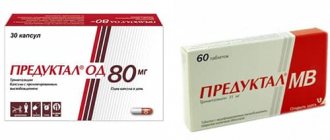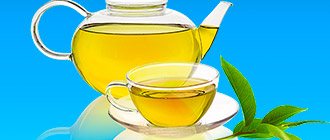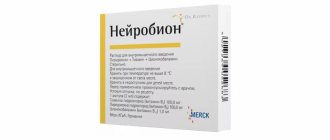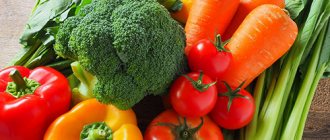Ginseng (“Root of Life”) is a medicinal plant of the Araliaceae family. Used as a general tonic. Ginseng grows in North America and Asia (Korea, Japan, China, Russia, Vietnam). It is believed that drugs based on it prolong the life and youth of the body. They eliminate symptoms of physical and mental fatigue, increase performance, stimulate sexual function, improve appetite, regulate blood pressure, and have a stabilizing effect on the central nervous system.
Description of the plant
The root is usually divided into two main parts: the root itself and the “neck”. The latter is a rhizome on which the annual rings are clearly visible (picture below). By the number of tubercles on the rhizome, you can easily calculate the age of the root.
The stem is herbaceous, about 40-50 cm in height, the leaves are palmately divided. It blooms in June, white and pink umbrellas are clearly visible in the grass. Bright red berries with two white seeds are produced in July-August. The pulp of the berries is poisonous; the seeds are sometimes used for treatment.
In the wild, ginseng is found less and less often. It grows for a long time, there are specimens 80-100 years old, only the root of at least six years is considered the most suitable and the older it is, the more valuable . Habitat: dense shady virgin forests of coniferous and mixed species, the foothills of the Sikhote-Alin in the Primorsky Territory. In China and Korea, wild ginseng can no longer be found; it has been cultivated for a long time. In America, there is another species, five-leaf ginseng (Panax quinquefolium), which only partially replaces the real one; it is valued much lower.
You cannot write about the root of life in the dry language of botany. There are too many legends, beliefs, and songs associated with it. He could make the seekers rich, or he could bury them forever in the wilds of the taiga. The Chinese name translates to "root man". The old ginseng root really resembles a person with arms and legs, and the more obvious this resemblance is, the more expensive the root is.
Buy ginseng tincture for 890₽
Ginseng seekers (root growers) in the Far East, both ours and the Chinese, consider it a living forest spirit; according to legend, the root is guarded by tigers. When a root grower finds a plant, he asks for permission to dig it out of the ground or goes to bed and he must dream about which root can be taken and which one can be left without being damaged; if you break the tradition, the taiga will not let go and the seeker will disappear forever. Ginseng is harvested either in the spring, when it has sprouted and is clearly visible, when it blooms, or when red fruits appear and are clearly visible. In other periods, it simply cannot be found in the remote taiga. They dig very carefully and respectfully.
Ginseng root
Botanical description
Content:
- Botanical description
- Chemical composition
- Useful and harmful properties
- "Red ginseng" with honey
- Folk recipes
- Ginseng tincture
- Benefits for hair
- Growing and Reproduction
- Conclusion
Ginseng has a branching, spindle-shaped tap root, 0.7-2.5 cm thick and reaching 25 cm in length. As a rule, large longitudinal or spiral-wrinkled branches extend from it. The “body” of the root is cylindrical with pronounced annular thickenings at the top, forming an apical bud. The leaves are palmately compound, long-petiolate, and converge into a whorl at the top of the stem. The flowers are small, pale green, collected in an umbrella. Visually they resemble stars. The stem is single, hollow inside. Plant height – 30-70 cm.
The fruit is a drupe with two flat seeds, bright red in color. The ripening period is August-September. The seeds are wrinkled, irregularly round in shape with a spout at the base, yellowish-gray in color.
Chemical composition of ginseng
Chemical studies have discovered in ginseng many biologically active beneficial substances, organic and inorganic compounds, complex and simple, vitamins, all of which have a healing effect on the human body.
- Glycosides;
- saponins;
- alkaloids;
- Sahara;
- essential oils;
- pectin;
- vitamins: groups B and C;
- folic;
- nicotinic acid;
- resin;
- amino acids;
- macro and microelements (iron, copper, titanium, chromium, cobalt, etc.).
Compound
Ginseng is a natural treasure. It contains:
- glycosides - have a beneficial effect on metabolism;
- acids (stearic, linoleic, palm) - stimulate brain function;
- phytoestrogens - calm hormonal storms;;
- essential oils - increase the tone of the circulatory system, help preserve youth longer;
- saccharides and pectins - improve the body’s resistance to infections, strengthen joints;
- microelements (copper, iron, zinc) - help the body recover from illnesses and promote tissue regeneration;
- vitamins (A, C, D, E and group B) - improve the body's resistance to infections, help overcome stress, and have a beneficial effect on the general condition of the endocrine system.
Types of ginseng
There are 15 types of ginseng, they grow in the Far East, Asia, North America; 3 types are mainly used in medicine:
- Common ginseng (ginseng);
- quinquefolium ginseng;
- Siberian ginseng (eleuthero).
Cinquefoil grows in North America and has a slightly different chemical composition and a weaker effect.
Let's look at ordinary ginseng, the main difference is whether it is a wild plant or grown on plantations in Korea, China, Australia, and the Far East. Wild ginseng is more valuable; the root takes any substances and elements from the soil and grows for decades. The cultivated root consumes for growth only what is given to it by humans in the form of fertilizers and growth stimulants; it is dug up for sale in the 6th year; it is smoother and more even than its wild counterpart.
Red Korean or Chinese ginseng is not a type, but a method of processing for storage and use. The washed roots are steamed and dried, they become brown in color and are called red ginseng.
The root is also divided according to quality into four types: heavenly (the best, at least 68g, similar to a person, without cuts or holes), earthly, good, cut.
Siberian ginseng - Eleutherococcus grows in Siberia and Altai under harsh conditions and differs in chemical composition and appearance. Its properties are less pronounced and have a cumulative nature. It can be used even by children to strengthen the immune system.
Ginseng stem
Interesting facts about ginseng
Ginseng is called the “root of life.” And in many Asian countries it is known as the “king of plants”. According to legend, ginseng appeared as a result of lightning striking a clear stream and absorbing all the power of “heavenly fire.”
From Chinese, the word ginseng is translated as “man root,” and all because it is strikingly similar to the human figure. And the more similar it is to the human body, the more expensive it is.
The ancient Chinese knew about its existence. They believed that it prolongs life and is a real elixir of youth. They believed that only people with a bright soul and good intentions could find ginseng.
Our ancestors began to use it 4 thousand years ago to improve their health. Its age can reach 100 years, and its weight can be 400 grams. In 1905, during the construction of the Suchansky railway, a specimen was found at the age of 200 years and weighing 600 grams. In Shanghai it was sold for 5 thousand dollars.
The older the root, the more diverse its properties. It is customary to give the largest roots, like rare diamonds, their own names, for example, the Ussuri Elder, the Emperor, the Great Hermit.
Ginseng grows in North America, China, Korea, Japan, Vietnam, and Russia. It is collected from June to November. Ginseng grows very slowly, gaining 1–1.5 grams in weight per year. Therefore, roots are collected from plants that have reached 5–8 years of age.
Under unfavorable conditions, the plant may go into hibernation. Those. All life processes in it are suspended, its growth and increase in root mass stop. And it can remain in this state for more than 20 years.
There are 12 types of ginseng. Korean is considered the most healing. In terms of ginsenoside content, it is more than several times higher than all other species.
Ginseng root is used as a natural dietary supplement to improve the functions of the entire human body and strengthen the immune system.
Useful properties of ginseng
Ginseng root and, in rare cases, seeds are used for medicinal purposes. Since ancient times, Chinese healers believe that ginseng promotes reproductive function and is a stimulant for the functioning of the entire body ; it increases the amount of vital energy. Modern scientists say that ginseng is an adaptogen, a medicinal plant that contains substances that increase a person’s adaptive potential, i.e. a person's ability to adapt to changing environmental conditions.
It's hot outside, our blood vessels dilate, we sweat; when it gets cold, the reverse process starts; there is a threat of foreign viruses or microbes, defense cells turn on. The body is constantly adapting to changes in the external environment. You will say that immunity is responsible for this and you will be right, our immunity depends on how quickly and efficiently this response occurs.
Ginseng root increases the body's ability to adapt to adverse environmental conditions.
Let's list the main beneficial properties of ginseng:
- activate the activity of the adrenal glands, it is the adrenal glands that are responsible for adaptive reactions;
- increases mental and physical performance. Experience showed that mice under the influence of ginseng exited the maze faster, were more active and learned new tricks;
- improves cerebral circulation, strengthens memory;
- promotes conception;
- reduces blood glucose levels;
- regulates metabolism;
- reduces weakness and drowsiness;
- reduces cholesterol levels;
- has a positive effect on hematopoiesis and the functioning of the cardiovascular system;
- increases blood pressure for hypotensive patients;
- reduces fatigue.
Let's take a closer look at how ginseng can be useful.
For men
Even if you do not experience problems in the genitourinary area, you should drink tincture or capsules with ginseng extract for prevention and to prolong men's health. It functions as a natural stimulant, acts gently, increases blood flow to organs and the sensitivity of nerve endings.
For women
Taking ginseng improves general condition and improves tone. It is important for a woman to feel young, energetic and full of strength. Taking the root increases the production of the hormone of joy and sex hormones. Increased blood flow to the pelvic organs promotes readiness for conception and childbearing. If pregnancy occurs, you should stop taking ginseng.
For children
As you already understand, ginseng affects sex hormones. Therefore, it is not recommended for children until puberty. Only as prescribed by a doctor, in an individual dosage, an infusion of the root is used in joint therapy with ginkgo biloba for children with ADHD syndrome. As well as for children for recovery after serious illnesses, chemotherapy, radiation therapy, but strictly individually and under the supervision of medical workers.
Useful and harmful properties
According to scientific research, it has been established that ginseng roots have adaptogenic, stimulating and tonic effects on the human body. Tinctures, ointments, decoctions, teas, powders, capsules and tablets are prepared from the plant. They improve the function of the nervous, endocrine, digestive and cardiovascular systems, prolong the youth of the body.
Positive influence of the “root of life”:
- Restores strength after grueling physical activity.
- Supports the human nervous system, relieves anxiety, cures neurasthenia, stimulates the breathing of brain cells.
- Accelerates wound healing, relieves inflammation, disinfects, strengthens teeth.
- Improves gas exchange in the respiratory system.
- Increases bile secretion, normalizes carbohydrate metabolism by reducing blood sugar, helps lose weight, reducing the risk of obesity.
- Strengthens hair follicles, improves blood circulation of the scalp, and prevents baldness.
- Activates the activity of the adrenal glands.
- Increases light sensitivity of the eyes.
- Strengthens the immune system and prevents seasonal colds.
Interestingly, ginseng root has a special effect on the body of men. The saponins contained in the plant stimulate the sexual activity of the stronger sex. With regular use of ginseng (for 2 months), sperm motility increases and sexual function improves. As a result, problems with male power gradually disappear. To increase the effectiveness of treatment during therapy, it is recommended to stop drinking coffee, since the drink causes excessive stimulation and excitability.
Despite the uniqueness of the plant, uncontrolled use of tinctures or drugs can cause harm to the body. With prolonged use, biological substances begin to accumulate in organs and tissues, which leads to increased blood pressure, dizziness and nausea. Ginseng shampoos can cause allergies, symptoms reminiscent of seborrhea - dandruff, intense production of sebum.
Contraindications:
- acute respiratory diseases;
- hypertension;
- pregnancy and lactation;
- insomnia;
- hyperfunction of the thyroid gland;
- increased nervous excitability;
- individual intolerance;
- age up to 12 years.
To avoid sleep problems, the “root of life” is taken before lunch, as it has a stimulating effect on the human body.
What diseases does ginseng root treat?
Ginseng root is credited with all-healing value and is used for long-term and debilitating illnesses accompanied by loss of strength and exhaustion. As a universal healing agent, ginseng is added in one dose or another in the treatment of many diseases (tuberculosis, rheumatism, allergies, nervous exhaustion, etc.), for recovery after oncology, surgery.
But it is mainly used to prolong human life, restore strength, freshness and youth, not only by sick people, but also by healthy adults.
Ginseng against atherosclerosis
Atherosclerosis is a disease of the large blood vessels of the arteries. The inner lining of the arteries becomes covered with fatty deposits (cholesterol plaques), the artery becomes narrower and blood flow to the organ decreases. This is the main cause of cardiovascular diseases.
Ginseng lowers cholesterol and improves blood circulation.
Ginseng root for neurasthenia
Irritability, a state of constant tiredness and fatigue. The neurasthenic loses the ability for prolonged mental and physical stress and breaks down into a hysterical state. Increasing stress resistance, physical endurance and general body tone when taking ginseng has a beneficial effect on such people.
Stabilizes the nervous system.
Ginseng will help keep you alert
Improving the supply of blood and oxygen to brain cells restores neural connections, the person is alert and able to think soberly and work productively. Eating the root can invigorate you if you have heavy workloads and do not have proper rest.
Toning effect.
Ginseng for diabetes
Diabetes mellitus is an endocrine disease, high blood sugar levels, disruption of the pancreas and insulin production. How can ginseng tincture affect this disease, where does glucose go from our blood?
Most of it goes into glycogen (a substance that is stored in the liver, our reserve supply of glucose). Under the influence of ginseng, the liver’s ability to produce glycogen and take glucose from the blood increases. It is for this reason that most teas for lowering sugar include the root of this plant. In addition, ginseng increases cell sensitivity to insulin and restores metabolism.
Produces glycogen and lowers blood sugar.
Ginseng root for colds
Ginseng improves immunity; it contains immunoglobulin protein, zinc, vitamin C and B vitamins, which prevent the spread of infection.
Zinc is an antioxidant, it reduces the risk of acute respiratory infections and reduces the duration of illness along with other vitamins.
Increases immunity, prevents the spread of infection.
Ginseng and gynecological diseases
Affects reproductive function in women at the hormonal level. When taking ginseng, the immune system itself copes with various inflammatory diseases and suppresses the activity of pathogenic microorganisms.
Improves the quality of hormonal levels.
Ginseng against prostatitis and impotence
After 40 years, the production of sex hormones in a man’s body decreases, erections become worse, desire is less frequent. In addition, a sedentary lifestyle leads to stagnation of blood in the pelvis and leads to inflammation of the prostate gland, which further aggravates problems with potency.
Ginseng is a libido stimulant. It can be taken once, before sexual intercourse, or it can be taken as a preventive measure once a year.
Blood flow to the genitals, anti-inflammatory and antimicrobial properties of ginseng root will help cope with prostatitis. Saponins in the root increase sperm motility. By taking ginseng tincture for two weeks, 28 drops before breakfast, you will feel a surge of strength and an increase in libido.
Increases libido and enhances potency.
For weight loss
Excess weight depends on the metabolic rate; if it decreases, then the calories eaten go not into energy, but into fat deposits. Ginseng tincture helps normalize metabolism, start metabolism, increases body tone and the desire to move and act.
Appetite decreases, and the amount of energy increases due to fat accumulation. Fats oxidize faster, glucose and cholesterol in the blood decrease.
Oncology
If you take ginseng to prevent cancer, the risk of disease is significantly reduced. The main area of treatment for cancer is the recovery period after surgery, after chemotherapy and radiation therapy. Numerous studies have proven that when taking ginseng, cancer patients reduce the pain index of cancer symptoms, as well as the side effects of chemotherapy in the form of fatigue and apathy. Appetite and tone increase, the number of leukocytes increases.
A group of scientists at the Korean Medical Center experimentally proved that long-term use of ginseng root significantly shortened the recovery period in patients undergoing chemotherapy after surgery for rectal cancer.
For high cholesterol
The effect is similar to that of lowering glucose levels. Ginseng acts on liver cells, causing them to quickly utilize cholesterol and its level in the blood decreases, and this prevents atherosclerosis and cardiovascular diseases.
Reduces blood cholesterol levels.
At low pressure
In case of hypotension, ginseng causes all body functions to become more active and work faster. Due to improved blood flow, the pressure rises slightly, then it returns to normal.
"Red ginseng" with honey
This is a general tonic. According to experimental data from the Korean National Ginseng Institute, it has been found that it slows down the aging process of the body, increases immune defense, and prevents the development of cancer. In addition, it enhances detoxification, increases energy production in cells, protects against atherosclerosis and diabetes, and stimulates the utilization of oxygen by cells.
A method for preparing a healing potion according to the method of Vladimir Bolibok
Wash fresh ginseng root (1 part), grate and add to heated honey (5 parts). Cook the resulting mass for 1 hour over low heat, cool and transfer to a sterilized glass jar. Store in a dark place. The healing elixir is prepared exclusively in enamel containers, which does not kill its beneficial properties.
Interestingly, heat treatment of raw materials enhances the healing properties of the root due to the conversion of some polysaccharides (starch) into oligosaccharides (caramel). The resulting product is a rich brick shade.
Take 5-10 ml before breakfast, between 8.00 and 11.00. For preventive purposes, “red ginseng” with honey is drunk from October to March, when the body’s immune status decreases.
The therapeutic and prophylactic dose is increased to 15-20 ml per day and distributed 2 times: on an empty stomach in the morning and before lunch.
Indications for use:
- increased mental and physical stress, chronic fatigue;
- prevention of colds in autumn and winter;
- radiation exposure both when radionuclides enter the body and from an external source;
- neuropsychic exhaustion, chronic stress (feelings of anxiety, fear, depression);
- elderly, senile age (for rejuvenation of organs and systems);
- recovery period after surgery, illness and injury;
- chronic intoxication (with alcohol, drug addiction).
“Red ginseng” is a potent remedy that requires strict adherence to prescribed doses. If the drug is abused, the following reactions from the body may occur: neck muscle tension, tachycardia, hair loss, insomnia. If these symptoms appear, stop taking the drug completely or reduce the dosage.
Contraindications for use:
- hypertension;
- pregnancy, age up to 12 years;
- severe neuropsychiatric diseases, seizures;
- encephalopathy (increased intracranial pressure);
- thyrotoxicosis (Graves' disease, hyperfunction of the thyroid gland).
Ginseng with honey is an adaptagen that helps the body save energy and restore strength. Fights fatigue and anemia. Used to activate skin cells: regeneration and improve metabolic processes. Ginseng honey is included in cosmetic soaps, lotions and creams. It helps get rid of wrinkles, pale skin, freckles and eczema.
Areas of application of ginseng
Ginseng has been known for a very long time in the countries of Southeast Asia. Gift of the gods, root of life, root of divine fire. There is a legend that when lightning strikes the ground, the divine source is cut off, and in this place a root of life full of divine fire is formed. This root is ginseng. Among the peoples of Asia, the root has found use not only as a medicine; it is eaten, sprayed on tea leaves, candied, added to soups or in water for washing.
Application in medicine
Still, the main area of application is medicine. Restorative therapy after oncology treatment, normalization of genital function in men and women, increased immunity, joint therapy in the treatment of chronic diseases. It is difficult to list all the uses of ginseng root in medicine. Doctors of all specializations recognize it as a general strengthening and adaptogenic remedy of the first magnitude.
Use in cooking
Ginseng root extract is added to honey, sweets, lemonade, and root powder is added to baked goods. Small pieces of ginseng are candied and dissolved like candy, 1-2 pieces per day. As an aphrodisiac, it is added to grape juice or wine.
Body stimulant
Ginseng is a natural stimulant of the body, its effect is stronger than that of caffeine . It, unlike synthetic stimulants, is harmless and does not deplete the body after repeated use. It increases performance and endurance.
Use in sports
The main function of taking ginseng is to increase immunity, then elasticity of blood vessels, digestion, respiration and nutrition of cells, restoration of muscle tissue occurs faster. The athlete recovers faster and adapts to heavy loads faster.
Ginseng is not a doping drug, but it enhances performance during training and competitions.
Best adaptogen
Ginseng increases the body's ability to adapt to external changes, adapt to heat, cold, and resist viruses and microbes. Gives strength after long flights and sleepless nights.
The properties of ginseng as the best adaptogen are recognized throughout the world.
Extension of youth
Ginseng slows down the formation of free radicals and oxidative processes, and promotes tissue restoration at the cellular level. Cells are rejuvenated, and since oxidative processes are slowed down, tissues and organs remain young and healthy longer. This does not guarantee eternal life, but old age will come more slowly.
The Chinese say that anyone who chews a piece of ginseng every day will live up to 100 years.
Cosmetology
Chinese beauties from imperial houses added an infusion of ginseng root to their washing water. Korean young ladies in the morning wiped their faces with cold water with an infusion of this magical potion. Let's not deny that the skin of both of them is like delicate porcelain. What prevents us from taking advantage of useful experiences? Nowadays, many cosmetic companies add ginseng root extract to skin care products.
You can make your own tonic: add a spoonful of ginseng infusion to clean water when washing your face or to a spray bottle to freshen your face. If you are approaching Balzac's age, it will not hurt to take a spoonful of infusion before breakfast for 3 cold months with breaks of 10 days after each month of intake.
An extract or infusion of the root is added to hair masks and shampoos. It stimulates the growth of dormant hair follicles, making hair thick and shiny.
Calorie content and nutritional value of ginseng
The root of the plant has the greatest nutritional value and benefit for humans, on the basis of which they make:
- tinctures - alcoholic or aqueous-alcoholic liquid that has not been subjected to heat treatment;
- capsules, tablets or granules;
- extract – concentrated liquid obtained from a plant;
- steamed roots - most often they are already ready for use;
- powder – dried and ground ginseng root.
The dried root of the plant is eaten; its calorie content is only 41 kcal per 100 g. The composition of the BJU is as follows:
- Proteins - 0 g;
- Fats - 0 g;
- Carbohydrates - 10 g.
This herbaceous plant is often used as a supplement, such as in tea or other tonic drinks.
If you intend to use a tincture, its calorie content will be significantly higher than that of the dry and ground root. Since the composition contains alcohol, the energy value can reach 100 kcal per 100 g. But keep in mind that for medicinal purposes the tincture is drunk in drops, so there is no need to worry about extra calories.
So, ginseng root is a low-calorie product. However, the range of its use is not as wide as it might seem. First of all, it is a medicinal product, so it is extremely important to know the chemical composition of the plant.
How to use ginseng?
Ginseng in any form for prevention or treatment is best used in cold seasons; in summer it is less effective. In home preparation, they use alcohol tinctures, water decoctions, ginseng tea, honey jelly, ointment, and paste. All dosages and courses of administration are given for preventive purposes. For treatment, the course and dose are selected by the doctor.
Ginseng in tincture, capsules and dry
Tincture
The tincture is made with 40-proof vodka from fresh or dry root. I offer several recipes from Chinese and Russian traditional medicine.
You can drink any tincture for no more than three months a year with breaks of 10-15 days after a month of use. It is better to use 15-20 drops 1-2 times a day in the first half of the day before meals. You should start with small doses.
- Fresh whole root (about 50g) is first soaked for 2 hours in sweet water, then poured with 0.5 liters of vodka. The next day, the composition is heated to 50 degrees and left for another month in a dark place. After a month, filter and pour vodka over the same root again. The process is repeated;
- Grind the fresh root into porridge and add vodka in a ratio of 50g to 500ml. leave for a month in a dark place at room temperature, stirring. When pouring the finished tincture for consumption, you can add vodka to the remaining mixture;
- the dry root is prepared in the same way. Only the proportions are different: for half a liter of vodka, take 20g of dry root, you need to cut it or grind it into powder.
There is an old Chinese recipe for using ginseng tincture. Take a spoonful of sugar, drop a drop of tincture into it and keep it in your mouth until the sugar is completely dissolved. This way, ginseng is immediately absorbed into the blood without entering the stomach. Every day you add one drop, bring it up to the number of your age and move towards decreasing the drops. Such prevention can be carried out once a year. The recipe is called “Chinese recipe”.
Ointment
For external use, an ointment is made based on beeswax, propolis and ginseng root powder. 15g of root powder (or a spoonful of extract), 100g of wax and 15g of propolis (you can take a teaspoon of propolis tincture), melt everything in a water bath and warm it up, stirring thoroughly for 5-10 minutes. This ointment helps with wounds, boils, acne, erosion, as well as dry skin and cracks. It should be stored in the refrigerator. Can be used for cosmetic purposes.
Sometimes a paste of powdered root is used to treat skin rashes.
Pour a spoonful of powder into two spoons of hot water, grind and leave for 60 minutes. Then the paste is applied to problem areas.
Decoction
The water decoction is made fresh every day and is not stored. Pour 2 teaspoons of crushed roots into a glass of boiling water, cook for 5 minutes and slowly cool to 40 degrees.
Take 1 tablespoon 2-3 times a day 20 minutes before meals.
Tea
Add 1 tsp to 50g tea leaves. spoon of ginseng powder, mix thoroughly and use as regular tea leaves. You should drink this tea in the first half of the day.
Honey cream jelly
Mix 50g ginseng root powder with 700g honey, heat to 40 degrees in a water bath and stir, beating like foam. Take 1 tablespoon with tea or water 2-3 times a day for a month, then a break of 10 days.
Growing and Reproduction
The area for ginseng is protected from prevailing winds and open sunlight. It should have a slight slope to drain rain and melt water. It is a shade-tolerant plant with a shallow root system that is vulnerable to drought. For favorable growth, the area with ginseng is kept in a loose, moist state by mulching. Loamy soil with a high humus content and drained sandy loam soil are considered the most favorable. It grows slowly and reproduces by seeds. In the first year of life, it forms one three-lobed leaf. The roots are not dug up for the winter. Intensive growth of the root mass occurs in the third year. It is during this period that ginseng begins to bear fruit. Seeds are collected in the fourth year. From one plant you get up to 40 pieces.
By the end of the fifth year, the height of the plant stem reaches 30-70 cm, depending on growing conditions.
The most common method of growing ginseng is the seedling method. In this case, one- or two-year-old roots with an apical bud are used. The recommended time for planting seedlings is autumn. During this period, the roots have the greatest survival rate. For propagation, plants use exclusively solid, dense shoots, since damaged roots will rot in the soil. The beds are covered for the winter.
Ginseng tolerates frost better than winters with frequent thaws.
Natural organic matter in the form of rotting fallen leaves, bark, and oak sawdust is suitable as a top dressing. At the same time, chemical fertilizers and manure stimulate the growth of shoots, increasing their susceptibility to disease.
Procurement of raw materials
Best materials of the month
- Coronaviruses: SARS-CoV-2 (COVID-19)
- Antibiotics for the prevention and treatment of COVID-19: how effective are they?
- The most common "office" diseases
- Does vodka kill coronavirus?
- How to stay alive on our roads?
Wash the dug up roots, dry them, place them on a wire rack and leave them in a well-ventilated room with a temperature of 15-30 degrees. Turn over once a day to prevent mold from growing. To check the level of drying, the raw material is broken. If, when bent, the roots make a characteristic cracking sound, then the crop is ready for long-term storage.
Possible contraindications and side effects
Even such a wonderful plant as ginseng has contraindications and side effects.
Contraindications:
- Pregnancy . Increases the tone of the uterus at all stages, which can lead to premature termination of pregnancy;
- Breastfeeding . The child will be restless;
- Age limit until full puberty. Ginseng root affects the hormonal system, and in adolescents, during puberty, it is already unstable (there are storms and recessions), it is better not to touch the hormones until they calm down on their own;
- Epilepsy;
- High blood pressure , hypertensive crisis. By making all body systems work faster, ginseng root can help increase blood pressure;
- Do not exceed the dosage or combine it with alcohol . The alcoholic infusion of the root is consumed in drops, not in glasses;
Side effects:
- When taken in the afternoon, it may cause insomnia;
- It is not recommended to take if you have an overactive thyroid gland;
- A blood thinning effect has been noticed; people with poor coagulability should take it with caution (so as not to increase bleeding);
- It is not recommended to take it with other tonic stimulants; it can cause overexcitation (do not add it to coffee, for example).
General indications for the use of ginseng tincture
Healing tincture is prescribed for:
- severe stress, severe physical fatigue, mental overload, decreased immunity, loss of appetite, general weakness and apathy, sleep disturbances, constant fatigue;
- upcoming intense physical and mental overloads, for example, for people in risky professions;
- obvious constant low blood pressure;
- the need to reduce blood glucose levels in diabetics;
- condition after suffering a serious illness.
Opinions of doctors and patients
Ginseng is a plant, but also a medicine that has proven effects on the human body. And before taking it, you need to consult with your doctor, study its effect and select the necessary dosage. The opinion of scientists and doctors practically coincides with the opinion of traditional healers, which is very rare. But in the case of the miracle root, the stimulating, adaptogenic, rejuvenating effect of the body is not in doubt.
Negative reviews of the use of ginseng occur only when the dosage or rules of administration are violated. Study the properties of the plant, think about whether it is right for you, and consult with a herbal therapist. Each person is individual and has his own opinion, based on your own experience. Ginseng helps everyone, but especially those who believe in its power.
Ginseng tincture and our blood pressure
People with hypotension experience general lethargy, apathy, loss of strength, and slow reactions and perceptions. Ginseng tincture helps regulate blood pressure to normal. For patients suffering from hypertension, ginseng is contraindicated.
This will only increase the negative manifestations of high blood pressure. There are still exceptions to this strict rule. Only a doctor can decide whether or not to take the tincture. In very rare cases, on the recommendation of a doctor, taking the plant with honey or ginseng tea is justified.
What to look for before buying and where to buy?
Preparations with ginseng root can be bought at a pharmacy, online from individual sellers or in online stores. If you have not encountered ginseng root before, it is better not to risk your health by buying it secondhand. Pharmacies and online stores have permission and certificates for their products.
When buying capsules, granules, tinctures, look at the expiration date and composition. Pharmaceutical preparations are often replete with additional chemical elements. Our company Jet-life provides a quality guarantee, has all certificates, delivery to any corner of Russia.
List of diseases for which ginseng is prescribed
The list of situations in which the “holy herb” tincture is prescribed is quite impressive:
- anemia;
- atherosclerosis and high blood cholesterol;
- diseases of the cardiovascular system;
- asthenic syndrome;
- hypotension;
- headache;
- diabetes mellitus and other metabolic disorders;
- arthritis;
- muscle and joint pain;
- ARVI, influenza, bronchitis, all respiratory symptoms (not in the acute period, without fever, for preventive purposes);
- digestive disorders, flatulence;
- neurasthenia;
- eye diseases;
- impotence;
- toothache and gum disease;
- oncological diseases.








